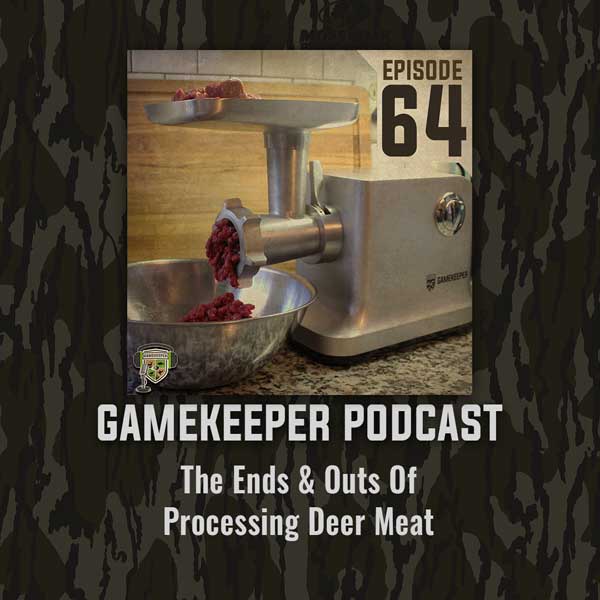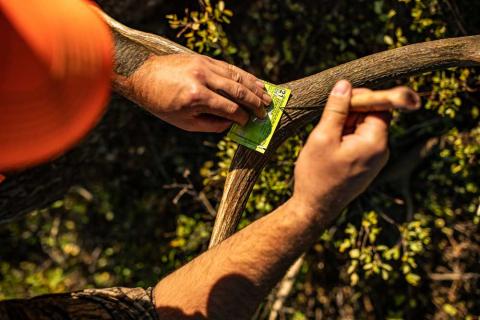Beka Garris

Butchering and processing wild game has always been a part of my life since childhood. Whenever anyone in my family killed a deer, our kitchen was turned into an impromptu butcher shop. The counters were cleared to make room for hindquarters, the meat grinder was pulled out of storage, and an assembly line was created on the dining room table with freezer paper and labels for the cuts of meat. It was a process that I always enjoyed, and one I continue to do myself every time I bring home some venison or any other wild game I may shoot.
I was lucky to have been raised by parents who taught my siblings and I how to care for, butcher and process the meat we brought home. I know that not everyone has a mentor to bestow such knowledge on him or her, and have to learn by trial and error, or simply by using the internet as a guide.
I do not consider myself an expert on the matter, however over the years I have learned a thing or two on butcher basics that I am sharing here.
Keep It Clean
Taking care of your wild game meat begins in the woods. Immediately upon the death of the animal, precautions should be taken to keep the meat from becoming dirty or overheated. This step can be different depending on whether or not you need to pack an animal out, or simply drag it to your truck. However, making sure to field dress as soon as possible, and keeping dirt out of the open cavity after field dressing is important.
Not everyone has access to a walk in cooler, however, when it comes to whitetail deer and any smaller game, quartering and keeping in the refrigerator for a short period is just fine. If it needs to be kept in the refrigerator for more than a day, I keep the meat covered and drain off excess blood daily. As long as your meat wasn’t contaminated with dirt or the contents of the deer’s stomach, your meat will be fine for a few days. Rule of thumb: if the meat smells bad, you do not want to bother keeping it to process.
Tools 101
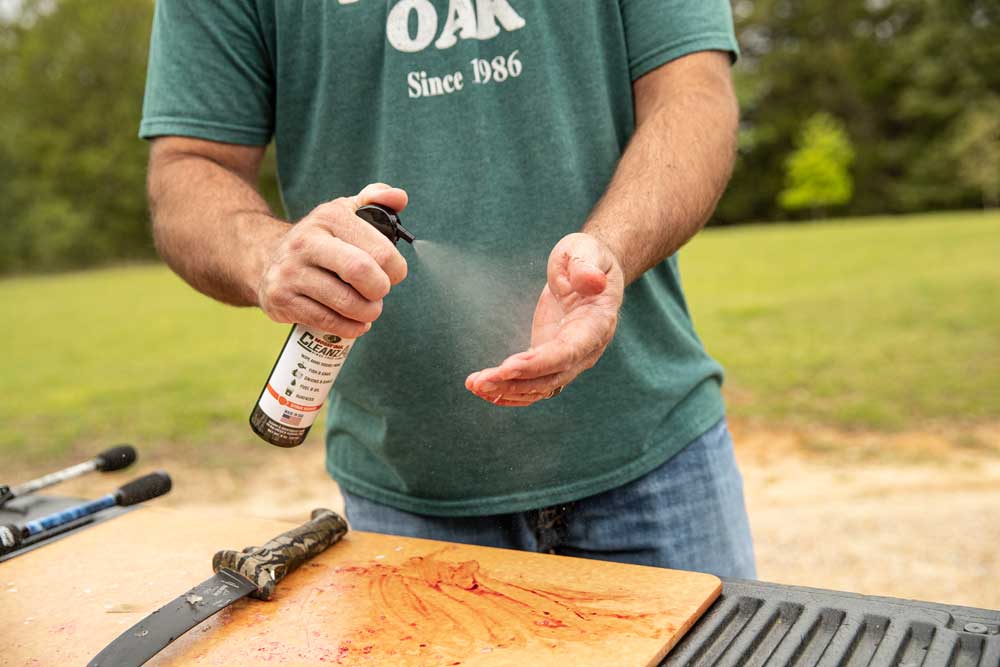
I prefer to keep my butchering tools simple. You do not need to drop thousands of dollars to be able to do a good job breaking down and processing your wild game.
- The first thing you will need is a clean work environment. You can’t expect your meat to stay clean if your counters are disgusting. You can lay down plastic on your counter, or simply wipe them down before and after you butcher your wild game.
- Although a full knife set is not necessary, you will need a few good sharp knives. I generally only use three knives during the whole skinning and butchering process. I break down any wild game with a simple folding knife with a three inch blade. I sharpen it after every use and keep it clean, and I’ve been using it for 20 years. For the actual butchering process, I use a long sharp filet knife for most of the breaking down, and a small cleaver style knife for cutting and slicing any large pieces into smaller cuts. Every individual will come to have their own preference, so use what works best for you. Just make sure your knives are clean and sharp.
- When it comes to packaging, there are many ways to do it and many ways that work. While I prefer using a vacuum sealer, I have also utilized freezer paper as well as freezer bags in a pinch. If using either of the last two options, I make sure to use several layers and seal tightly to help prevent freezer burn. Our meat is always gone within a year, so we have not really encountered any freezer burn yet.
- Break your cuts down into the appropriate size. If you’re a family of four, package the cuts accordingly. However, if you live alone, chances are you don’t want to thaw two pounds of venison at a time. If you need to, you can take out more than one package to create a larger meal.
- Date and label everything. There is nothing worse than taking out a package of meat in hopes of making a grilled steak, only to find out you really thawed out a pound of roast.
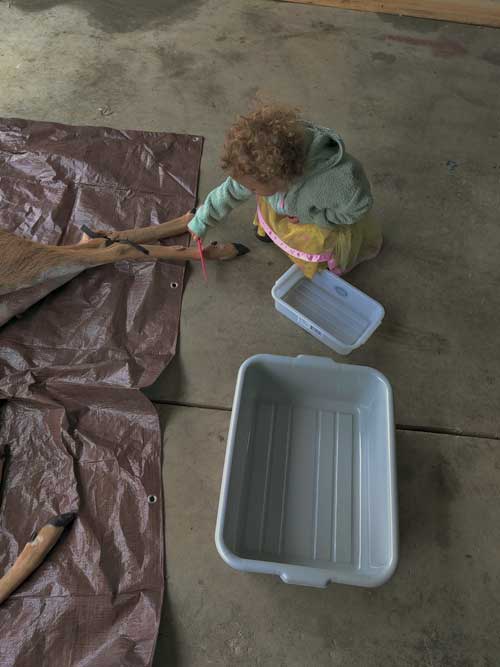
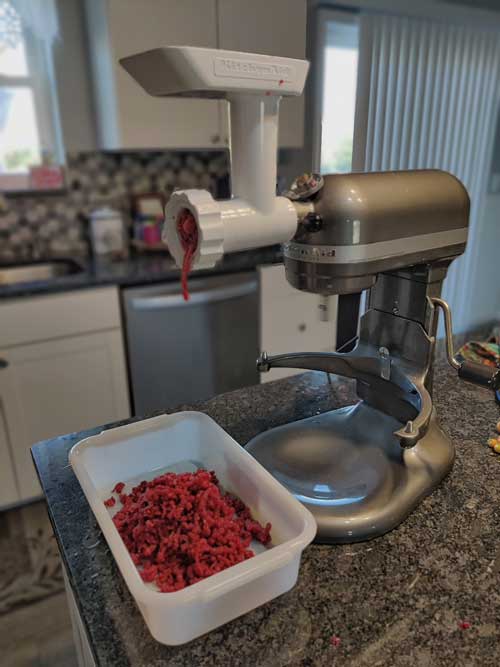
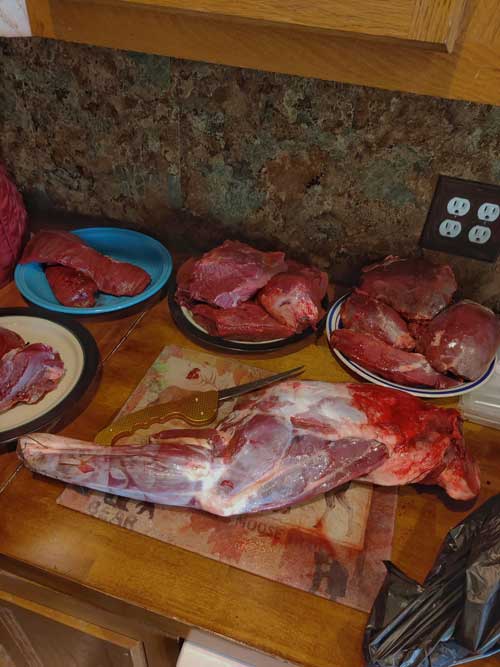
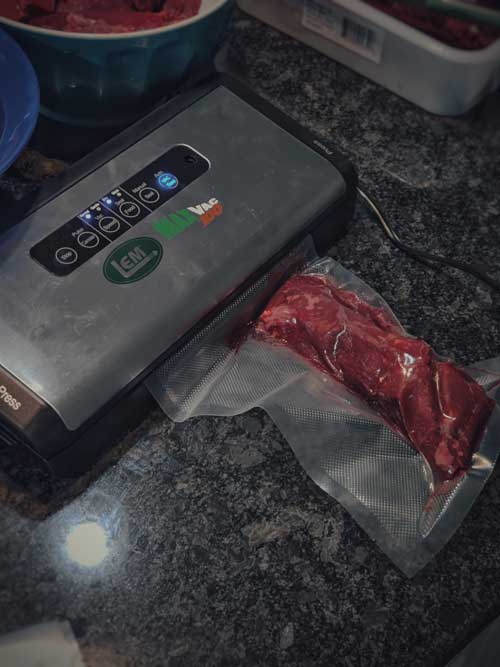
Grinding: not everyone has a meat grinder in the house. However, if you shoot a lot of wild game and like to use ground meat, a meat grinder is well worth the investment. It’s also convenient to have a grinder if you don’t have any ground meat and want to create some with a pack of stew meat or roast. I prefer grinding my wild game fresh the day I plan on using it as it tends to taste better. That in itself makes the meat grinder worth it.
Butchering may seem a daunting task to those who have never done it, and although it can be time consuming, it is also a task that is well worth learning. You will improve over time, and you’ll save a bundle on butcher fees.
